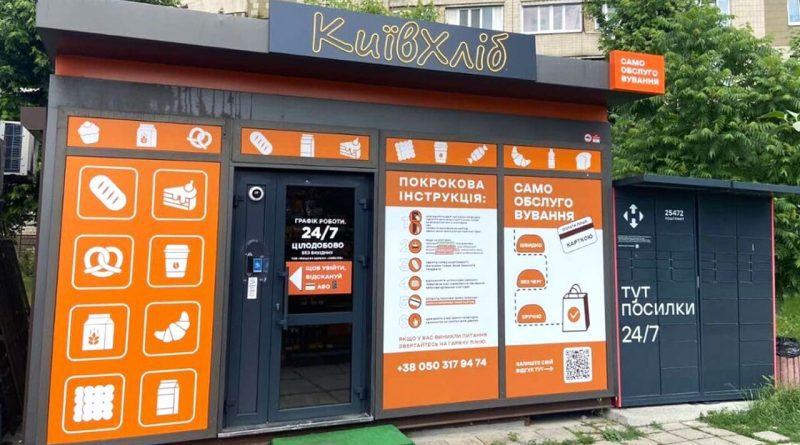A new shopping format: Kyivkhlib stores without staff appear in Kyiv
15 August 17:35
“Kyivkhlib is developing the format of stores without salespeople in the capital for the second time. This was reported by "Komersant Ukrainian" with reference to the manufacturer’s Instagram page.
Currently, such stores are located at 29/35 Heroiv Dnipra, 44-a Drahomanova Street, 33 Prazska Street, and 6 Generala Almazova Street. Another location will be opened soon at 4 Rusanivska Embankment.
You can enter them using a bank card with NFC or a smartphone with Apple Pay/Google Pay. If the contactless function is not available, you can use a card through a contact reader. The green light of the indicator means access, the red light means that the card is not supported.
Inside, customers select products, scan barcodes, and pay at the self-service checkout with their card only. To leave, they press a button near the door. The stores are equipped with video surveillance, and the assortment is similar to the chain’s regular outlets.
The first store of this format opened in February 2024 in Sviatoshynskyi district, and by the summer the chain had grown to six. However, in the fall, due to massive power outages and some cases of theft, only one outlet remained.
The new format of food purchases offered by Kyivkhlib has a number of both positive and negative consequences. The advantages include
- reduced staff costs. There is no need to hire sellers and cashiers, which reduces fixed costs;
- faster service. Customers choose their own goods and pay for purchases without queuing at the checkout;
- round-the-clock operation. The autonomous format allows you to work without breaks and weekends (although this format is currently unavailable in most Ukrainian cities due to the introduction of curfews);
- modern brand image. The format is associated with innovation, which attracts young people and active technology users.
- sales analytics. The system immediately records all purchases, which simplifies accounting and demand forecasting.
The disadvantages of this commercial solution include
- dependence of the points on electricity and the Internet. A power outage or network failure paralyzes the store’s operation;
- the risk of theft. Despite video surveillance, the offline format can provoke petty theft;
- limitation of the audience. People without bank cards or smartphones will not be able to use the store;
- incomplete range of services. There is no way to get advice or assistance, which is important for some customers;
- costs of technology implementation. Investments in equipment, software, and its support are required.
Read also: The cost of bread in Ukraine will increase: the expert named the reasons and gave a price forecast
“Kyivkhlib in 2025: what is the economic situation around the national bread producer?
In the first two quarters of 2025, the company generated revenue of UAH 2.646 billion, while net profit reached about UAH 13 million. This demonstrates a certain revival of activity, as the year before, in 2024, revenues amounted to UAH 4.718 billion and net profit was UAH 22.6 million.
As of 2024, the company’s assets were valued at UAH 974.5 million, while liabilities amounted to UAH 923.4 million. This is a fairly high level of financial burden on the balance sheet. The current liquidity ratio was 0.96, indicating the company’s limited ability to repay short-term liabilities.
The financial dependency ratio (the share of borrowed funds in the financing structure) was 19.07, and the ratio of borrowed funds to equity was 18.07. These figures indicate that almost all of the capital consists of debt, and own resources are minimal.
As of the second half of 2025, the profitability of the national bread producer reached 56.41%.
Despite economic challenges, including global instability and military risks, Kyivkhlib demonstrates steady growth in turnover: more than half of the annual result was achieved in the first half of the year.
The high profitability of products (56%) indicates a successful pricing policy or optimization of supply and production chains. However, excessive debt (almost 18 times higher than equity) creates potential risks in the event of financial shocks or changes in the liquidity environment.
Читайте нас у Telegram: головні новини коротко









